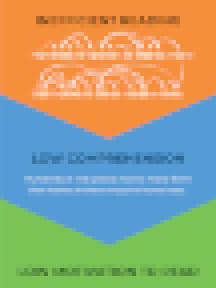In 2015, Minnesota’s Northfield Public Schools had a district-wide gut check. The pre-K-12 district serves 4000 kids, and that year a new state law requiring that all high school juniors take the ACT went into effect. The test results for Northfield were sobering: just under half the juniors failed to meet the ACT’s college-ready reading benchmark score of 22 out of a possible 36.
“When we dug into the data, we noticed that a sizable percentage of kids were just missing the benchmark—they were one, two, three points below,” says Hope Langston, Northfield’s Director of Assessment Services. The main hurdle? In the reading section, students were struggling to grasp the content and answer the questions all within 35 minutes. “High school teachers told us many kids were having a harder time reading grade level content text,” says Langston. “They simply couldn’t read quickly enough to get through this level of material."
Northfield’s class of 2016, it turns out, reflects a distressing reality in the US: kids are much slower, less efficient readers than they used to be. A recent study sponsored by Reading Plus, an adaptive literacy intervention platform, found that by the time they finish high school, today’s students read 19% slower than their counterparts of 50 years ago.

Using materials and methods comparable to a survey study conducted in 1960, researchers measured the comprehension-based silent reading efficiency of US students in grades 2, 4, 6, 8, 10 and 12 in 2011. Both studies used eye-movement recording technology—film strips in 1960; high-tech goggles in 2011—as students read standardized 100-word grade-level passages and tried to answer 10 questions. The researchers captured four things: reading rate (words per minute); fixations—or eye stops—per word; fixation durations; and regressions (right-to-left eye movements) per word.
The study found that students in 1960 and 2011 read at similar rates in second grade. For the kids surveyed in 2011, however, reading efficiency largely flatlined—and even regressed in some cases—in middle school. Kids surveyed in their senior year in high school in 2011 were reading 45 fewer words per minute than their 1960 counterparts. Furthermore, researchers found a 17% increase in fixations per word among high school students in 2011 compared to 1960, meaning many of today’s high schoolers are still spending a lot of time simply decoding words—a strategy typically used by people just learning to read.
“In our study, the lowest quartile was actually reading below the speaking rate by 12th grade,” says Alexandra Spichtig, one of the study’s authors. “These students are going through school for 12 years and they can't even read as fast as they can speak. That makes comprehension super difficult and not enjoyable.” When kids struggle to read and can’t answer comprehension questions, Spichtig adds, “they start to question their intelligence.”
The implications beyond that—and beyond Northfield Public Schools’ ACT results—are grim: inefficient readers won’t just spend many more hours than efficient readers completing assignments in school and college, they will struggle to keep up with demands in the workplace as well.

Learn how to find the right reading intervention for your school at our Oct 23rd webinar.
Sign up and get actionable tips from administrators, educators, and experts.
Why are kids struggling to read more today than 50 years ago? It’s a fraught question, and the culprits are probably many, from poverty in some cases, to hours spent scrolling through social media, to kids having less unstructured time to read for pleasure. “The overarching issue is probably that students just read less,” says Spichtig. “With reading less comes less practice. Then with less practice, reading doesn't feel as comfortable. When something doesn't feel comfortable, you don't like to do it.”
Langston agrees. “Part of it is many of our kids don't have broad exposure to grade level text as they move through our system,” she says. “They also have not had a lot of practice with timed reading.” Because Minnesota state assessments are untimed, many Northfield kids had never taken a timed test prior to the ACT.
Download the Reading Plus Overview Brochure to learn more about the only adaptive literacy intervention program that measures and improves efficiency, motivation, and comprehension for students in grades 3-12.
To help their kids develop and practice good reading habits, the district decided two years ago to try the Reading Plus platform for all its fifth, sixth and seventh grade reading classes. The district focused on middle school in part because, like the kids in the study, their middle schoolers weren’t making gains in reading. “The standards changed to Common Core in 2013 and our middle school had pretty lackluster results in reading with the adoption of more rigorous standards,” says Langston. “We knew we needed to try something different, something that went as high as our advanced learners needed to go but could also help our kids who are struggling.”
A key Reading Plus feature is a “guided window;” it moves across the text at a rate that is individually calibrated to the student, and it speeds up as the student demonstrates consistent comprehension at that rate. “Then it's going to ask the student, ‘Do you want to go a little bit faster?’” says Langston. “The student can say yes or no. It's supporting them, but giving them a little bit of a push to get them to a level that is going to allow them to grow as a reader.”
The guided window “models what efficient, effective reading looks like so that we can help students develop efficient and effective habits,” adds Spichtig. “It's not about speed reading at all.”
It’s also not replacing reading instruction, says Langston. “This is a supplemental program we use as sort of a vitamin.” The dosage, as Langston calls it, depends on one’s reading level. “If you're at or above grade level, you need to do fewer stories per week to get the effect that is good for you than someone who's below grade level.”
While it is too soon to see a Reading Plus impact on students taking the ACT, Northfield has seen promising results among its middle schoolers. “Our grade six is one bright spot,” says Langston. Overall, Northfield’s sixth-grade reading proficiency increased 3.7% to 77.2% this past year. Since the district implemented Reading Plus two years ago, overall sixth- grade reading scores have improved 7.6% and reading proficiency rates for Hispanic students have improved 13.7%. “That has been pretty exciting,” says Langston.
More exciting still, many students have become more enthusiastic readers thanks to Reading Plus. In a survey that district students took after using the platform for a year, 93% of them said it made them a better reader and 92% said they enjoyed Reading Plus some, most or all of the time. “It has increased my reading a lot,” one fan wrote. “I wish I would have found out about Reading Plus a while ago.”



